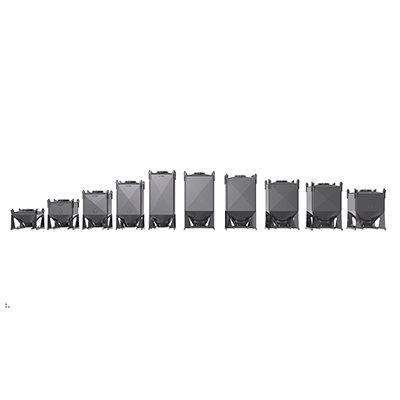Top 12 Analytical Lab Equipments in Pharmaceutical Industry
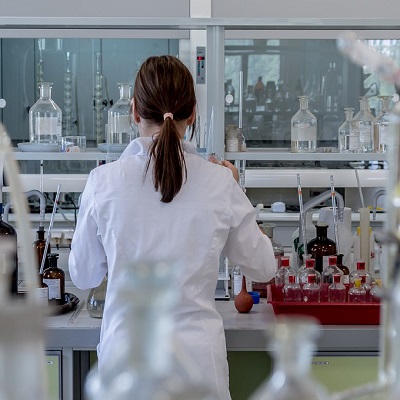
The analytical lab equipments or instruments are used in analytical applications in pharmaceutical, food-processing laboratories, chemical, clinical, and oil refineries. These lab equipments or instruments help in analyzing materials and setting up the composition. The most common types of analytical lab equipments are calorimeter, spectrophotometer, electrochemical instrument, refractometer, colony counter, automatic density meter, fiberscopes, conductivity meter, demagnetizers, automatic titrators, and several others.
These days, analytical instrumentation field has become more complicated. In the modern times, personal computers and micro-controllers have been incorporated into analytical equipments to give more accurate findings. Few of these instruments also play a crucial role in the monitoring and control of environmental pollution.
In this article, we have listed out some prominent analytical lab equipments, out of which let's dive into the top 12 used in pharmaceutical industry.
Types of analytical lab equipments are -
| Spectrophotometer | Demagnetizers | Salinity Meter | X-ray Analytical | Infrared |
| Refractometer | Fiberscopes | Dissolved Oxygen Meter | Viscometer | Gas Detector |
| Calorimeter | Mercury Analysers | Oxygen Analyzers | Rheometer | Flow Injection Analyzer |
| Electrochemical Instrument | Oscilloscopes | Oxygen Meter | Turbidity Meter | Colorimeter |
| Conductivity Meter | Polarimeters | Photo Colorimeter | TOC Analyzer | Air Sampling |
| Videoscope | T.D.S. Meter | pH Meter | Titrators | |
| Automatic Density Meter | Flame Photometer | Nephelo Meter | Raman | |
| Automatic Titrators | Chemistry Analyzer | Moisture Titration | Polarimeter | |
| Colony Counter | HPLC | Thermometer | Particle Counter |
Spectrophotometer
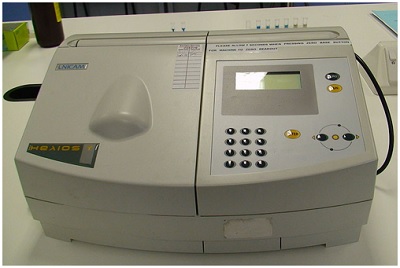
This analytical lab instrument is required in the process of spectrophotometry, which is the quantitative measurement of the transmission or reflective properties of a material as a function of wavelength. Hence, this instrument is used for measuring reflectance or transmission of solutions, opaque or transparent solids such as gases, or polished glass.
The spectrophotometers are used in different scientific fields including chemistry, physics, molecular biology, and physics. The instrument is widely used in industries such as laser and optical manufacturing, semiconductors, besides laboratories for the study of chemical substances.
Refractometer
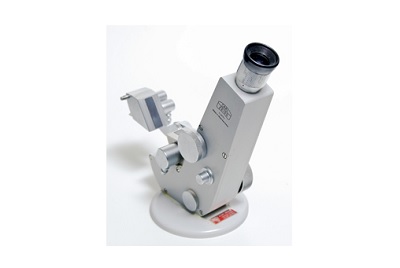
The device is used to determine the refractive index of liquids, gases, and translucent solids. For things like specific gravity of urine, fluid concentration, salinity, and blood proteins, the refractive index is usually measured. With this analytical lab instrument, we can also determine how much the speed of light is reduced in a solution, gas, or solid. The instrument is frequently used for measuring the sugar content of fruit and fruit juices, milk, wine, soft drinks and yeast cultures.
Some various kinds of refractometers are -
• Traditional handheld refractometers
• Laboratory refractometers
• Digital handheld refractometers
• Inline process refractometers
Calorimeter
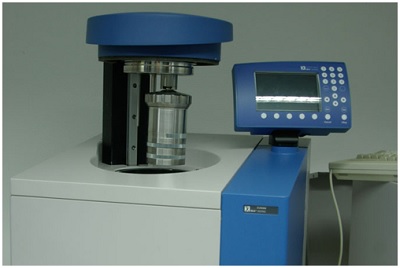
An analytical lab instrument that's used in the process called calorimetry. In the calorimetry process, the instrument measures the heat produced during physical or chemical reactions. The calorimeters come in different types depending on the physical or chemical nature of activities to be conducted.
A few of the most commonly found calorimeters are -
• Titration calorimeters
• Differential scanning calorimeters
• Accelerated rate calorimeters, and
• Isothermal calorimeters.
Gas Detector
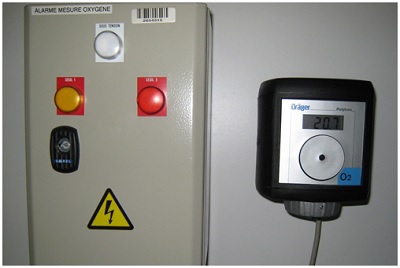
This is a very functional device usually found in oil rigs, gas refineries, gas plants, and other places where gas is stored or produced. Its primary function is to detect the gas leakage in industrial workplaces and raise an alarm to avoid accidents. This is basically a security device built in with a control system that raises an alarm automatically upon detection of gas leakages.
The gas detectors alert operators in the area where the gas leakage occurs and provides an opportunity to advert hazards. This is significant at such places because there are several gases that can be injurious to humans and also animals. The device can detect flammable and toxic gases, combustible, and oxygen depletion. The gas detectors are also used in fire fighting.
Flow Injection Analyzer
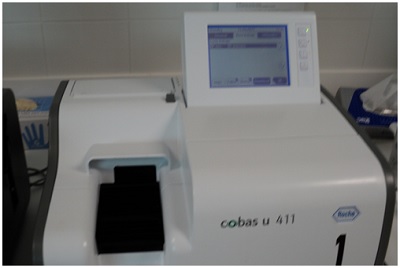
An analytical laboratory instrument used in chemical analysis processes that's done by injecting a sample plug into a flowing carrier stream. The device is used in the flow injection analysis (FIA). A little of the analysis is done in the automation of frequent environmental and agricultural assays such as phosphate, nitrate, and ammonia.
Commercially, the flow injection analyser is used tremendously in several industries. A prominent application of this device is that it's used in the online monitoring of protein and biomass, sugars, lactic acid during lactic acid fermentation. It's also very useful for illustration in the chemistry lab and hence, helping students familiarize with flow injection analysis.
TOC Analyzer
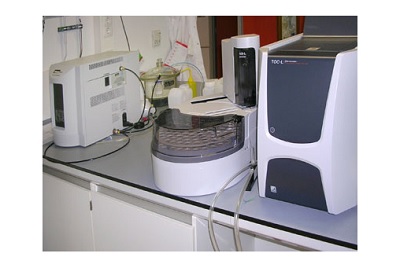
This equipment is used to determine the total organic carbon (TOC), which is the amount of carbon bound in an organic compound. This chemical property is usually understood as a non-specific indicator of hygiene level or water quality of pharmaceutical manufacturing equipment.
TOC is a method used in the water purification process. The TOC analyzers are suitable for monitoring lakes, ocean, and rivers. They are also used to assist in the water management from public sources, manufacturing processes, wastewater, besides the pharmaceutical industry.
Oxygen Analyzers
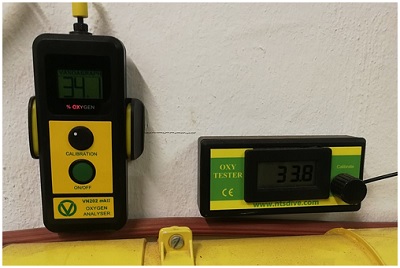
This is a major field device used to analyze the oxygen percentage. The device is usually used in applications in oil and gas, coal-bed methane, and a broad range of industries. Oxygen analyzers are also used by professional divers who go deep down into the water to study the sea life. The oxygen carried in tanks used by divers is regulated to a meter to detect the oxygen percentage.
These devices come in different stylish designs and in-built features depending on the application type. Modern equipments show groundbreaking features like touch screen LCDs with outstanding operability for settings, trend graph viewing, and calibrations. Other may comprise integrated probe and converters and may not need a sampling system.
Automatic Density Meter
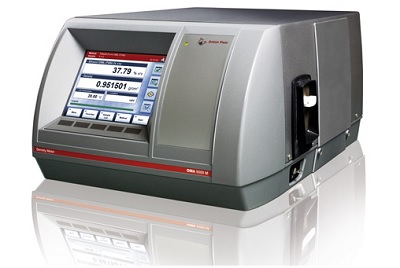
This analytical lab instrument is used to measure physical properties such as specific gravity, density, and concentration of substances. Besides calculating density, the automatic density meters can also be used for quality assurance to examine raw materials before using for production. They are used in the pharmaceuticals, chemical, and petrochemical industries.
Viscometer

A device used to measure fluid viscosity. Using this instrument, the viscosity of liquids is established under one flow condition. The viscosity is measured by another lab instrument called a rheometer, which is used for differential flow condition of liquids. The viscometer is used in applications such as measurements on polymer solutions, wort measurement in beer, inks, low-viscosity oils and other applications in the biotechnology and the pharmaceutical industry.
pH Meter

The pH meter is used for measuring the pH of a liquid, be it alkanity or acidity. A usual pH meter includes a special measuring probe, which is often a glass electrode connected to an electronic meter that measures and shows the pH reading. The pH meter is also used to measure the pH of semi-sold substances.
This device is among the most famous and most vital measuring devices used by chemists and non-chemists in field, lab, and industrial environment.
Electrochemical Instrument
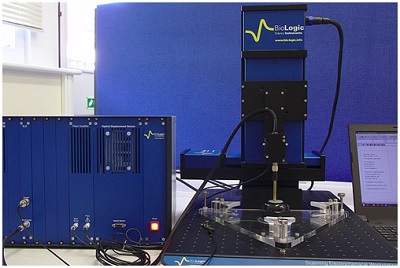
The electrochemical instruments find applications in electrochemistry, that are a branch of chemistry that deals with chemical reactions involving an electron and an ionic conductor. In such reactions, transferring electron takes place between the electrode and the electrolyte.
The most common instruments classified as electrochemical instruments are potentiostat, zero resistance ammeters, and galvanostat.
Fiberscopes
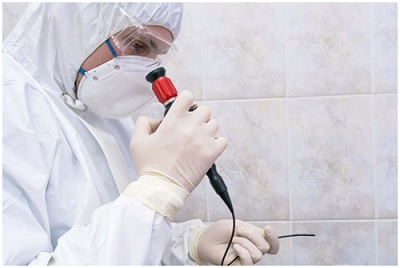
Fiberscopes are used to check small parts and components in areas where examination through naked eye is not possible. The device is used to scrutinize minor components in tightly packed equipment in situations wherein we cannot easily access the part to be inspected.
The fiberscopes are used in a variety of applications such as computer repair, medicine, locksmithing, machining, safecracking, espionage, and computer forensics among several others.


